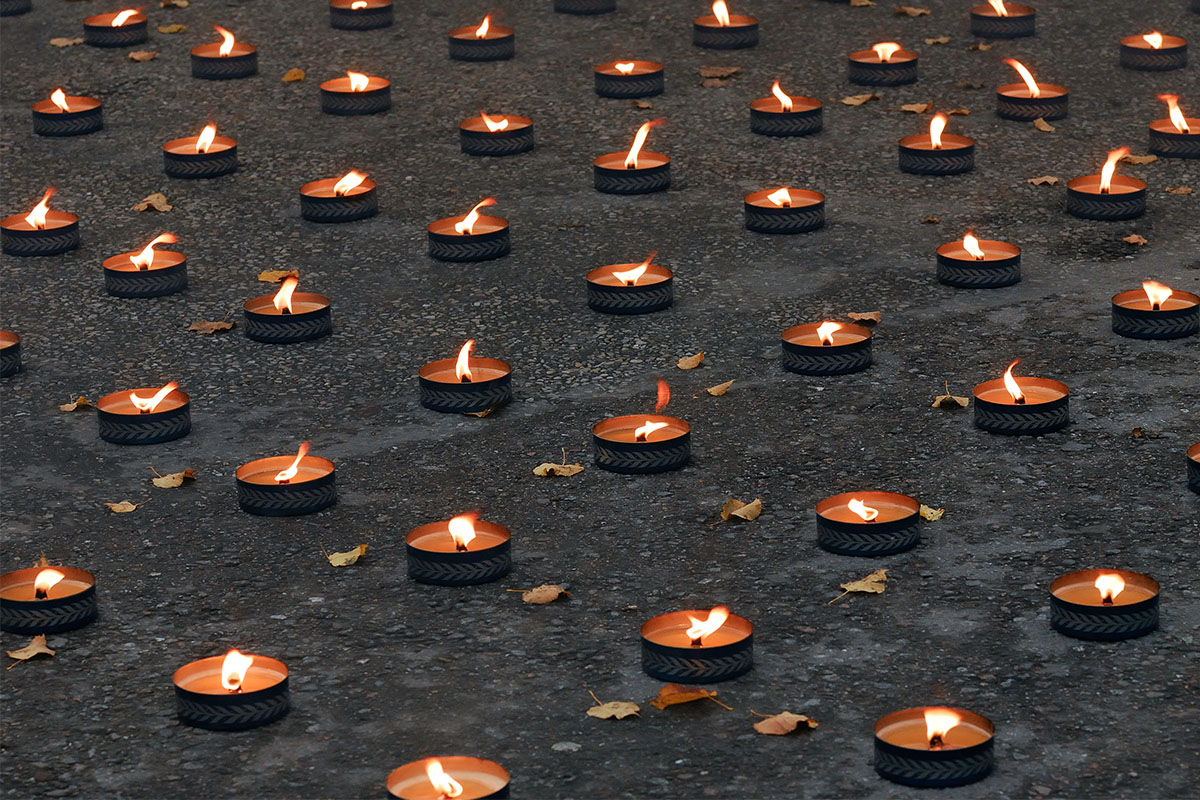Auschwitz, for many, is eponymous with the Shoah, or Holocaust. It’s shorthand for the genocidal horrors that the Nazis and their collaborators inflicted primarily (but not exclusively) upon the Jewish people. Since 2005, International Holocaust Remembrance Day has been observed on January 27, the anniversary of Auschwitz’s liberation. On that date, ceremonies honor the survivors and their descendants and mourn the some 6 million Jews who were killed for being Jewish.
While the numbers communicate the scale of tragedy, they fail to tell the details of individual lives and communities that were lost.
We learn, from the Talmud, that each life contains an entire world. Accordingly, each victim of the Shoah deserves to have their story recorded and preserved. Though there are databases and archives at museums such as the United States Holocaust Memorial Museum and Yad Vashem in Israel that do just that, we will never be able to tell the story of every life lost. Yet we — including scholars, descendants of survivors, and witnesses — know the life stories of many.
Following are the stories of six women who perished in the Shoah. While we will never know what they may have accomplished had they survived, they lived remarkable lives that are worth honoring and remembering this International Holocaust Remembrance Day. May their memories be for a blessing.
1. Regina Jonas
Thought to be the first woman ordained as a rabbi, Regina Jonas was born and raised in Berlin, where she studied at the Higher Institute of Jewish Studies with the goal of being ordained a rabbi. In her graduating thesis, she argued that halakhah (Jewish law) permits the ordination of women. It wasn’t until 1935, five years after her graduation, that liberal rabbi Max Dienemann agreed to ordain her. In those five years, the National Socialist Party (Nazis) had come to power in Germany and had begun making life more difficult for German Jewry.
Regina Jonas began her rabbinate in time of turmoil. Committed to her profession, she provided pastoral care to those community members who couldn’t leave Germany and traveled throughout the country to communities lacking rabbis. Deported to Theresienstadt in 1942, she continued rabbinic work there for two years before being deported to Auschwitz in the fall of 1944, where she was killed shortly after arrival.
2. Charlotte Salomon
Charlotte Salomon’s world changed after her father, Albert, was imprisoned at the concentration camp Sachsenhausen as part of the November pogrom on November 9-10, 1938. Her mother secured his release on the condition that the family leave Germany. While her parents moved to Amsterdam, Charlotte left her art studies in Berlin behind and went to live with her grandparents in Southern France.
In the fall of 1940, after being released from Gurs concentration camp, Charlotte undertook an immense artistic project where she fictionalized her family history and her life through some 800 illustrations. Titled, “Life? Or Theater?,” Salamon’s artwork illustrated the tragedy of becoming foreign in one’s own land.
Unfortunately, Charlotte didn’t flee far enough. After the Nazi occupation of Southern France in 1943, Charlotte and her husband were arrested by the SS. She was soon sent to Auschwitz, where as a pregnant woman, she was murdered upon arrival. While she died, her artwork, discovered by her parents after the war, remains as a testimony to her artistic ability and life story.
3. Hannah Karminski
Trained as a social education worker, Hannah Karminski worked as a secretary and editor for the League of Jewish Women starting in 1924. After Jewish organizations were banned in 1938, Hannah joined the Reich Association of Jews in Germany. After being temporarily imprisoned during the November pogrom, Hannah returned to her work, which consisted primarily of organizing the Kindertransport.
By leading the Kindertransport, which brought Jewish youth to a safer environment in London, Hannah saved more than 10,000 lives. Though she traveled to London frequently as part of her work with the transports, she always returned to Germany in order to continue saving lives, going against the wishes of her family, who urged her to leave. In November 1942, she was arrested and imprisoned. Hannah was sent to Auschwitz the following month, where she was killed. What remains is her legacy of saving many Jewish youth from the same fate.
4. Mala Zimetbaum
Born in Poland in 1918, Mala Zimetbaum moved with her family at the age of 10 to the Netherlands. That move, and the linguistic skills that it afforded, proved important when she was captured and sent to Auschwitz from the Netherlands in the summer of 1942. Speaking multiple languages, including German, Polish, and French, Mala had a privileged status in the camp as a runner and translator for the SS.
It was in Auschwitz where she met her lover Edek Galinski. After using her privileged position to try and help fellow prisoners as well as be active in the underground, Mala escaped Auschwitz with Edek, only to be recaptured. Placed in isolation upon return to the camp, they were moved to Birkenau and sentenced to public executions, a fairly common punishment for captured escapees. What Mala did next, however, showed her bravery. Before execution could be carried out, she slit her wrists. She died shortly thereafter, after having resisted the Nazis not only by aiding prisoners, but by escaping and thwarting their planned execution.
5. Gisi Fleischmann
Gisi Fleischmann stands out for being a prominent female Jewish leader during World War II. Active in Zionist activities in Slovakia and more broadly throughout Europe, Fleischmann helped many Jews escape Nazi-controlled Europe, including her own daughters. After Jewish organizations were banned by the Nazi-allied Slovak state, Fleischmann joined the Nazi-run “Jewish council.” Around the same time, she became a driving force in the Working Group, a resistance effort that wanted to bribe Nazi officials in order to save Jewish lives.
Though ultimately unsuccessful, Fleischmann continued to try and save Jewish lives, at one point trying to trade German prisoners of war for Jewish children. Fleischmann was sent on the last transport from Slovakia to Auschwitz in October 1944. Upon arrival, “return undesirable” was written next to her name; accordingly, she was immediately taken away by the SS and executed.
6. Roza Robota
Roza Robota was a member of the Jewish underground at Auschwitz and is perhaps most remembered for her role in enabling the Sonderkommando revolt of October 7, 1944. Born in Poland, Roza was active in the HaShomer HaTzair youth movement during her childhood. She went on to be active in their underground activities, before being sent to Auschwitz with her family in 1942. While working in the clothing kommando, Roza became acquainted with three women (Ala Gertner, Ester Wajsblum, and Regina Safirsztajn) working in the Weichsel-Union-Metallwerke factory. These women slowly smuggled gunpowder out of the factory, where Roza would receive them before passing them on to the underground.
In the aftermath of the revolt, Roza’s involvement was discovered by an undercover German agent. She was imprisoned and tortured, yet refused to give up the names of those that she worked with. About three weeks before the camp’s liberation, Roza was hanged for her resistance activities, but her boldness lives on.
Image by Antema via Getty Images



